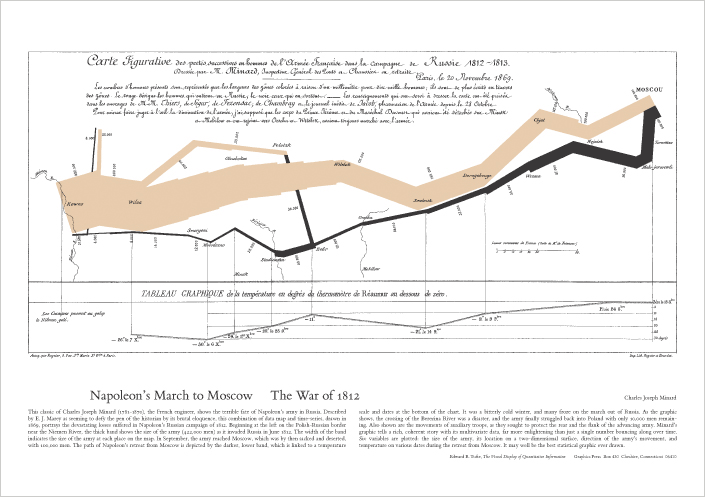While at Amazon, we were all told by Divine Fiat that ALL PowerPoint Presentations — regardless of kind, cannot ever be on Powerpoint. Period. No PowerPoint Period. Bezos prefers prose and actual thoughts slapped in a report — an actual paper report with paragraphs, charts, sentences, an executive summary, introduction of problem, research approach and findings (body of paper), conclusions and recommendations — not choppy, half-thoughts on a gazillion slides. His phrase was “Don’t ever, ever use Gratuitous ClipArt on anything.” I think that is wise advice.
[contentblock id=37]
Today, Seth chimes in on Powerpoint Slides, which inspired this post.
I once received a powerpoint presentation from a colleague; in the business world, powerpoint presentations are often amourously called “powerpoint decks.” Well, this deck was a huge one — 80 pages long. And, no, I didn’t read it, not one single page of it.
I am a huge fan of Edward Tufte. In his book, The Cognitive Style of Powerpoint, he explains why the widespread use of powerpoint isn’t good for any of us. He argues the following:
Powerpoint has a pushy style; it elevates format over content, turning once-informative work into a sales pitch. The result is dominance over your audience. One element that is particularly disturbing is the emphasis on byte-sized consumption: instead of writing in complete, coherent sentences, Powerpoint encourages infomercial type language and scattered thoughts.
In terms of content, Powerpoint allows ~40 words per slide; with so little information per slide, the result is the need for many, many slides — hence, the term “Deck.” Moreover, because presentations are sequential and stacked in time, it’s difficult to understand and find relationships. Accoring to Tufte, visual reasoning works more effectively when relevant information is shown side-by-side. This is especially true when data is involved — which usually covers most business and technology presentations — because a fundamental analytical act is to make comparisons. It is difficult to make comparisons when a deck is sequential; it is better to have handouts so that the audience can compare data from one slide with another slide at their own convenience. What about placing several charts on one slide, allowing for comparison on the same slide? This can be done, but it’s difficult since there is so little space on a slide.
Continuing, Powerpoint encourages simplistic thinking; hence, content is compromised, which is very disrespecful to the audience.
Tufte concludes that presentation failure and audience boredom is a problem of content failure, not a decoration failure. If the integrity of your data is suspect and the way you present your data is over-bearing and not relevant, no matter how many clipart images or fancy colors you use will save the presentation — it’s a content failure; more decoration won’t save it. He further says that Powerpoint doesn’t respect the audience, but instead seeks to dominate them; it doesn’t encourage conversation or convey knowledge.
I am a huge fan of Edward Tufte. I agree with most of his points against Powerpoint; I do think he’s a little intense about the whole thing, but I do agree that, in terms of Powerpoint as a tool for conveying knowledge and the visual display of quantitative information, Powerpoint is a bad vehicle to use.
An Example of an Effective Display of Quantitative Information
A wonderful piece of both art and mathematics is Charles Joseph Minard’s map that portrays the losses suffered by Napoleon’s army in the Russian campaign of 1812. This map is beautiful and informative: it shows 6 variables plotted in a most informative and elegant way.
Beginning on the left at the Polish-Russian border, the grey band shows the size of the army as it invaded Russia in June 1812. Napoleon started with 422,000 men and finally reached Moscow with 100,000 men. The black band shows the army’s retreat from Moscow, finally making it back to Poland with 10,000 men. This black band is linked to the temperatures and dates at the botton of the map.

There is a larger version of the map here. Many statisticians and mathematicians have also munged their own verson of Minard’s map here.
Conclusion
What once began as a piece against Powerpoint is ending as a piece about information architecture, design, and information theory. Tufte has influenced many areas of mathematics, design, and industrial engineering. Check his works out if you haven’t yet. You’ll be better for it. And, if you have to use Powerpoint, use it intelligently — in a way that actually conveys information, not just fluff.









Did these Amazon reports have to include capitalization?
On the map: I hadn’t realized that the French had lost the majority of their men (300k+) before they reached Moscow. I’m going to read more on this.
The cap thing mentioned by Jeff reminded me of working at a GE subsidiary. In GE culture they are called “pitches” as opposed to decks. And every freaking word is in title caps. So you end up with stuff like:
The ROI Waterfall Walk Clearly Indicates a Year Over Year Trend Toward a New Paradigm of Profitability on a Going Forward Basis
The good things that I got out of the GE culture was to un-clutter graphs (no grid lines, no 3D, easy colors) and keep graphics simple (big chevrons, simple shapes and no clip art).
Of course I always laugh inside when people refer to giving a presentation as pitching because of the gay sex metaphor of pitching and catching. But as they say… if the shoe fits…
I found a good response to Tufte by folks who teach business communications. They take the horrible shuttle slides and make them into a coherent story.
For those of us who go to church on Sunday and hear a sermon without slides, we know that PPT is not necessary to communicate a message. Of course, the sermons I hear do not talk about major shifts in business strategy based on learnings from customer service research.
Then again imagine the Gettysburg Address in ppt
http://norvig.com/Gettysburg/Gettysburg.ppt